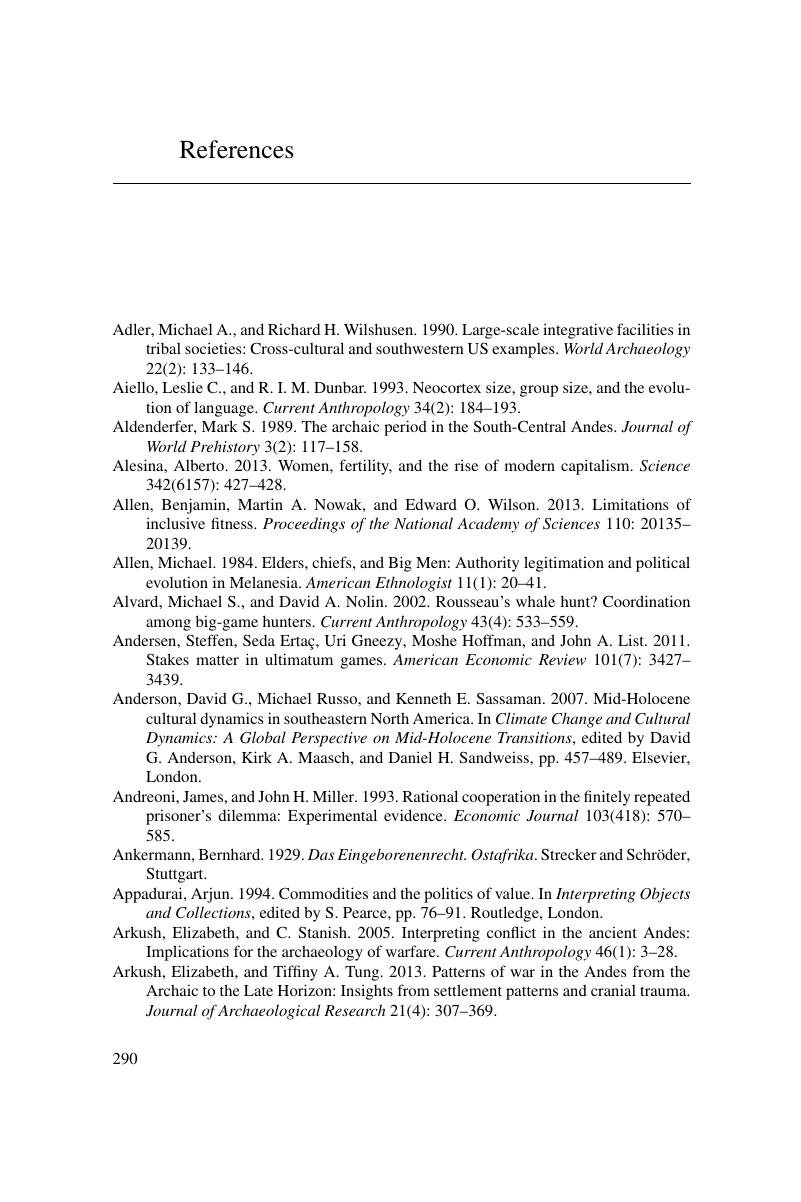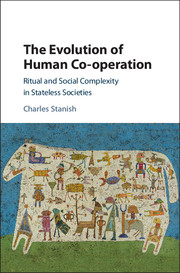Book contents
- The Evolution of Human Co-operation
- The Evolution of Human Co-operation
- Copyright page
- Dedication
- Contents
- Figures
- Preface
- 1 The Evolution of Human Co-operation
- 2 Economic Anthropology of Stateless Societies: The Rise and Fall of Homo economicus
- 3 Conditional Co-operators: The Evolutionary Game Theory Revolution
- 4 The Role of Coercion in Social Theory
- 5 The Ritualized Economy: How People in Stateless Societies Co-operate
- 6 An Anthropological Game Theory Model for the Evolution of Ritualized Economies
- 7 The Evolution of Ritualized Economies: The Archaeological Evidence
- 8 Epilogue: “No Beans, No Jesus”
- Notes
- References
- Index
- References
References
Published online by Cambridge University Press: 30 August 2017
- The Evolution of Human Co-operation
- The Evolution of Human Co-operation
- Copyright page
- Dedication
- Contents
- Figures
- Preface
- 1 The Evolution of Human Co-operation
- 2 Economic Anthropology of Stateless Societies: The Rise and Fall of Homo economicus
- 3 Conditional Co-operators: The Evolutionary Game Theory Revolution
- 4 The Role of Coercion in Social Theory
- 5 The Ritualized Economy: How People in Stateless Societies Co-operate
- 6 An Anthropological Game Theory Model for the Evolution of Ritualized Economies
- 7 The Evolution of Ritualized Economies: The Archaeological Evidence
- 8 Epilogue: “No Beans, No Jesus”
- Notes
- References
- Index
- References
Summary

- Type
- Chapter
- Information
- The Evolution of Human Co-operationRitual and Social Complexity in Stateless Societies, pp. 290 - 323Publisher: Cambridge University PressPrint publication year: 2017



